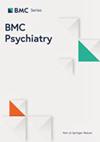The association between expressive suppression and anxiety in Chinese left-behind children in middle school: serial mediation roles of psychological resilience and self-esteem
IF 3.4
2区 医学
Q2 PSYCHIATRY
引用次数: 0
Abstract
Left-behind children (LBC) have become a special population to be concerned due to the negative consequences of parental absence during their physical and psychological development in China. Expressive suppression (ES) is a response-focused emotion regulation and may be frequently used by LBC to suppress their emotions resulting in different forms of internalizing problems. The objective of the present study was to investigate the role of ES as an emotion regulation strategy on anxiety in Chinese left-behind children in middle school (LBC-MS) by considering the mediating role(s) of psychological resilience and self-esteem. 820 middle school students aged between 12 and 17 years from a middle school in Xiangtan, Hunan Province, participated in the study. Screen for Child Anxiety Related Emotional Disorders (SCARED), Emotion Regulation Questionnaire (ERQ), Resilience Scale for Chinese Adolescents (RSCA), and Rosenberg Self-Esteem Scale (SES) were administered. Variables measured using the above scales in left-behind children in middle school (LBC-MS) and non-left-behind children in middle school (non-LBC-MS) were compared, and descriptive statistics were used to present the overall characteristics. Then the PROCESS macro of SPSS was used to conduct regression-based statistical mediation for the data of 211 left-behind children. This study revealed that LBC-MS had higher anxiety and ES scores and lower psychological resilience and self-esteem scores than non-LBC-MS (Ps < 0.01). ES was found positively associated with anxiety in LBC-MS and negatively associated with psychological resilience and self-esteem (Ps < 0.05 − 0.01). Specifically, both psychological resilience and self-esteem significantly mediated the association between ES and anxiety, accounting for 7.50% and 10.68%, respectively, of the total associations. Moreover, psychological resilience and self-esteem had a chain mediating effect between ES and anxiety in LBC-MS. The findings indicated that LBC-MS in China may frequently engage in the use of ES which correlated with higher level of anxiety. Psychological interventions should be dedicated to this underserved group. Intervention approaches that improve emotion regulation strategies (i.e., decrease the use of ES) and increase psychological resilience and self-esteem may help to alleviate anxiety in LBC-MS.中国初中留守儿童的表达性压抑与焦虑之间的关联:心理复原力和自尊的序列中介作用
在中国,留守儿童(LBC)因其身心发展过程中父母不在身边所造成的负面影响而成为一个需要关注的特殊群体。表达性压抑(ES)是一种以反应为中心的情绪调节方式,可能被留守儿童经常用来压抑自己的情绪,从而导致不同形式的内化问题。本研究旨在通过考虑心理复原力和自尊的中介作用,探讨表达性压抑作为一种情绪调节策略对中国初中留守儿童(LBC-MS)焦虑的影响。来自湖南省湘潭市某中学的 820 名年龄在 12-17 岁之间的初中生参加了本研究。研究使用了儿童焦虑相关情绪障碍筛查量表(SCARED)、情绪调节问卷(ERQ)、中国青少年抗逆力量表(RSCA)和罗森伯格自尊量表(SES)。比较初中留守儿童(LBC-MS)和非初中留守儿童(Non-LBC-MS)使用上述量表测量的变量,并使用描述性统计来呈现总体特征。然后使用 SPSS 的 PROCESS 宏对 211 名留守儿童的数据进行基于回归的统计调解。研究发现,与非留守儿童相比,留守儿童的焦虑和 ES 得分更高,而心理复原力和自尊得分更低(Ps < 0.01)。研究发现,ES 与 LBC-MS 的焦虑呈正相关,而与心理复原力和自尊呈负相关(Ps < 0.05 - 0.01)。具体而言,心理复原力和自尊在 ES 与焦虑的关联中起着显著的中介作用,分别占总关联的 7.50%和 10.68%。此外,在 LBC-MS 中,心理复原力和自尊在 ES 与焦虑之间具有连锁中介效应。研究结果表明,中国的 LBC-MS 可能经常使用 ES,而 ES 与较高的焦虑水平相关。心理干预措施应专门针对这一服务不足的群体。改善情绪调节策略(即减少ES的使用)、提高心理弹性和自尊的干预方法可能有助于缓解LBC-MS的焦虑。
本文章由计算机程序翻译,如有差异,请以英文原文为准。
求助全文
约1分钟内获得全文
求助全文
来源期刊

BMC Psychiatry
医学-精神病学
CiteScore
5.90
自引率
4.50%
发文量
716
审稿时长
3-6 weeks
期刊介绍:
BMC Psychiatry is an open access, peer-reviewed journal that considers articles on all aspects of the prevention, diagnosis and management of psychiatric disorders, as well as related molecular genetics, pathophysiology, and epidemiology.
 求助内容:
求助内容: 应助结果提醒方式:
应助结果提醒方式:


